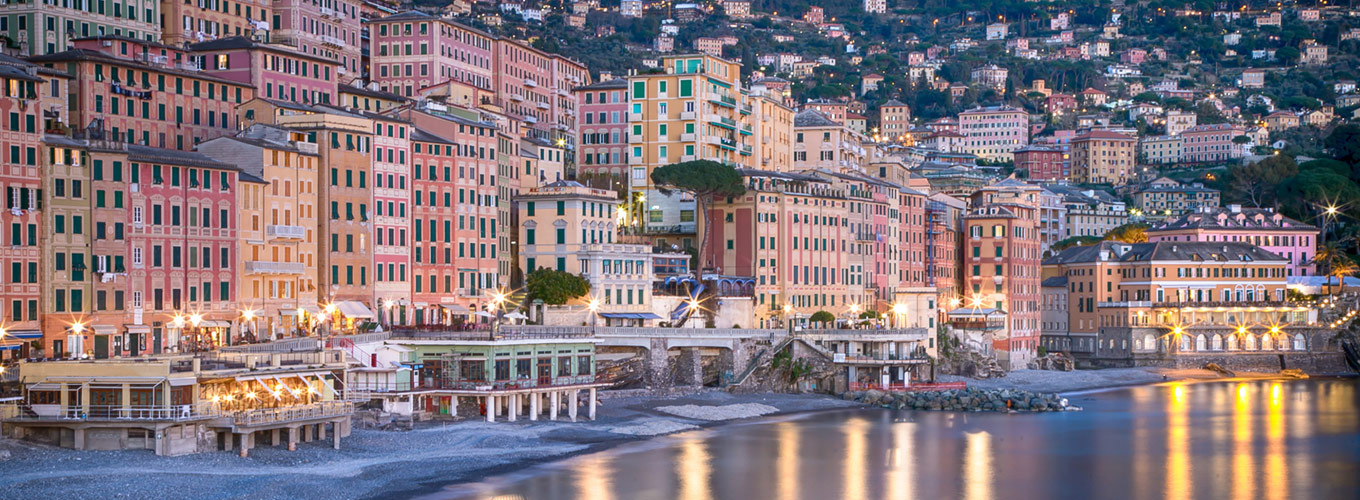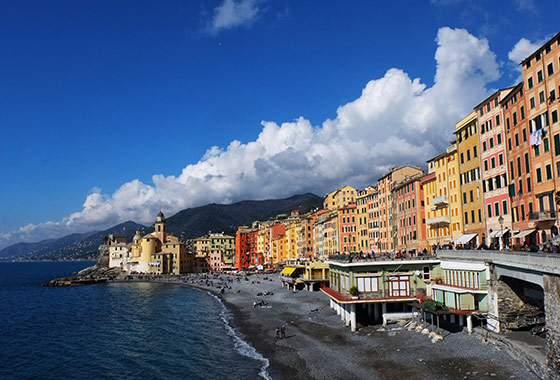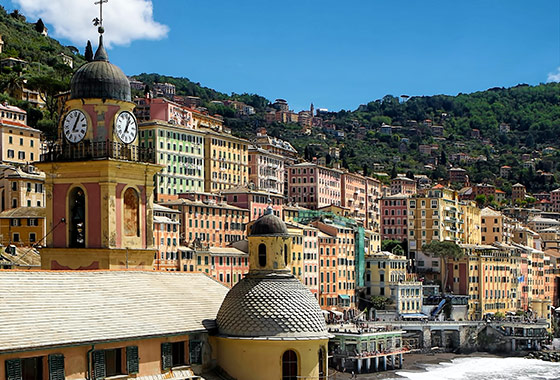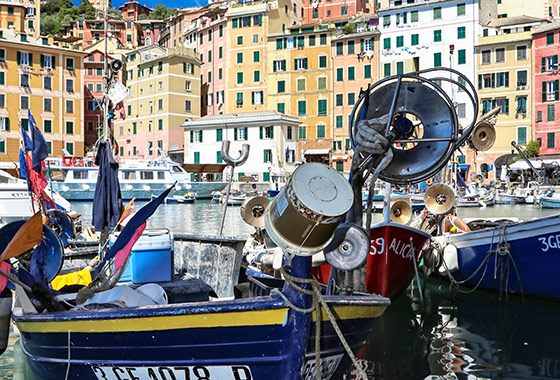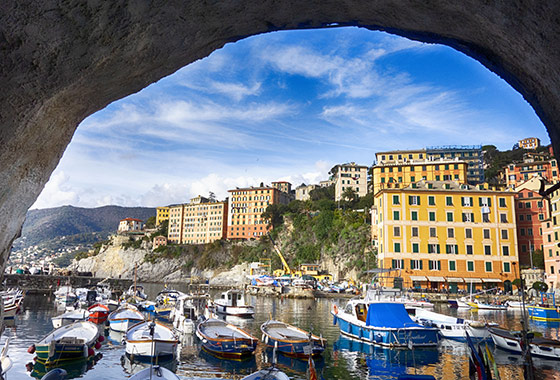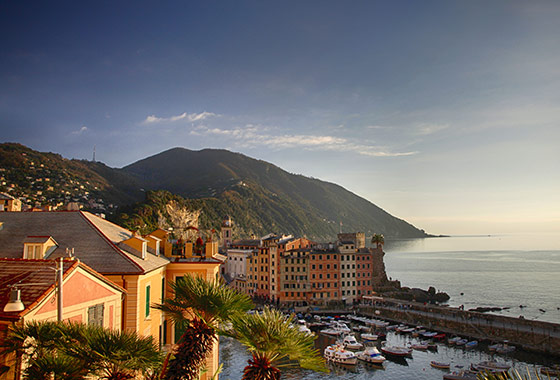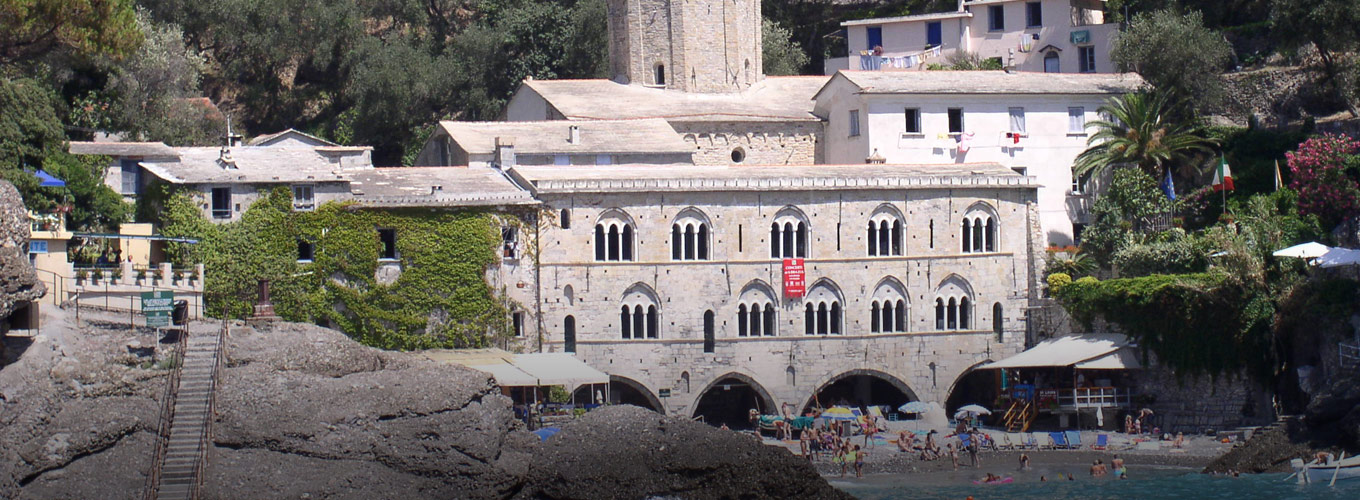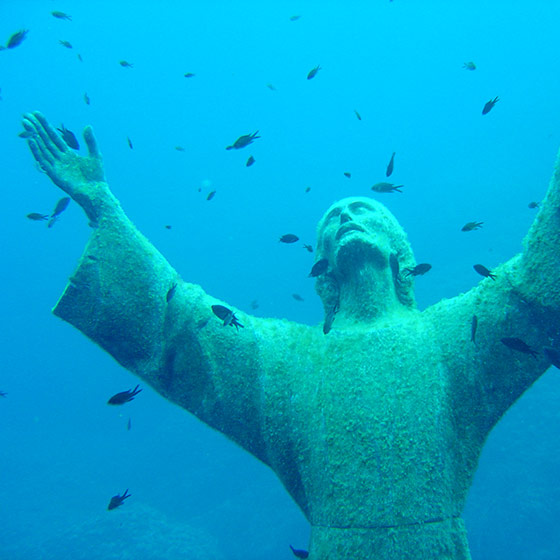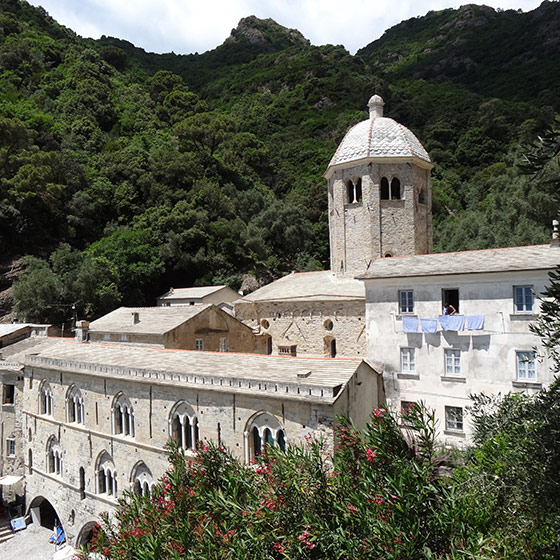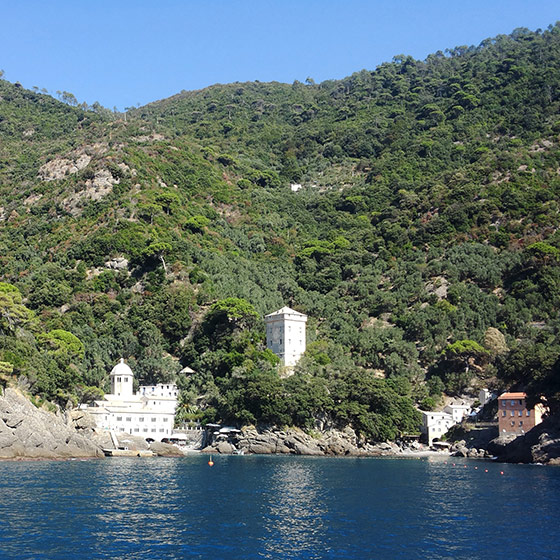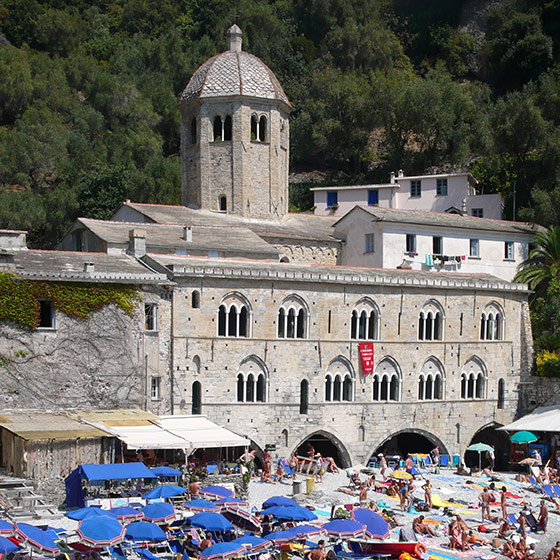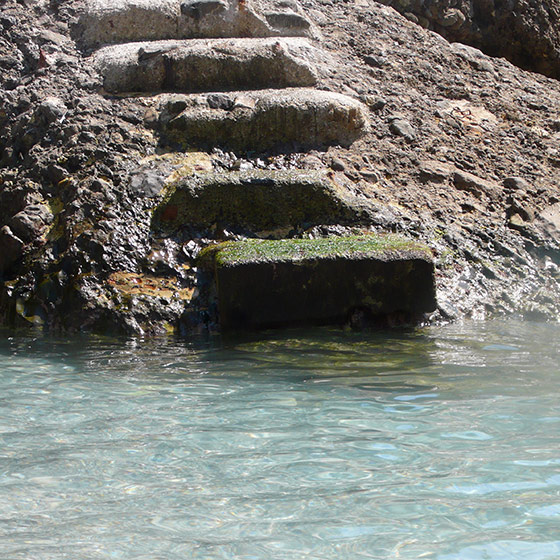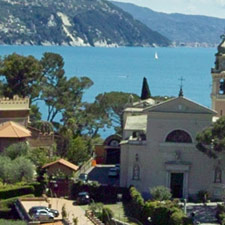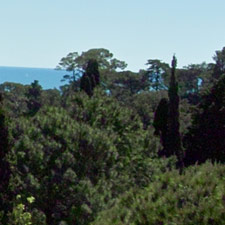The town of Camogli on the “Golfo Paradiso” is located west of the promontory of Portofino.
Legend has it that the name Camogli derives from the Genoese dialect “ca a muggi” (houses in piles), because of the characteristic appearance of the colorful buildings facing the beach as they cling to each other like many alert sentries.
The light colors of the horizontal lines that can be seen between the floors are called ‘marcapiano’ (floor- markers), and were used by sailors to locate their home while sailing back home.
Known as the “city of a thousand white sailing ships“, Camogli boasts a celebrated tradition in sailing, which reached its peak in the second half of 1800.
Every May the famous Fish Festival takes place: tons of fish are fried and offered to the crowd gathered for the occasion.
The huge frying pan they use weighs 26 quintals and has a diameter of 3.80 meters.
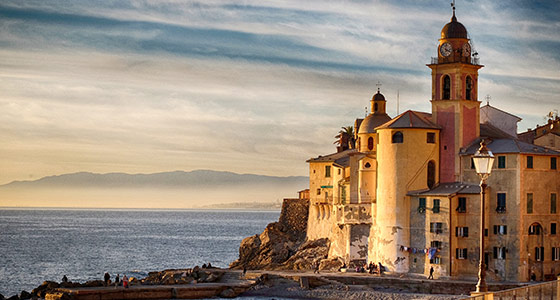
CAMOGLI AND ITS SURROUNDINGS
“Efforts are rewarded by the magnificent view from that height: the first vision of Genoa and the Mediterranean from that point does not leave room for regret”
Lady Sidney Morgan
From the hamlet of Ruta di Camogli, on the homonymous pass, the wide open view over the Gulf of Genoa is spectacular.
A little further on, near the church of San Rocco start two beautiful pedestrian paths, one of which leads to the cliff of Punta Chiappa, the cape that delimits to west the Portofino Marine Reserve.
DISTANCE FROM THE HOTEL: 9Km approx.
BACK TO LOCATIONS LIST

